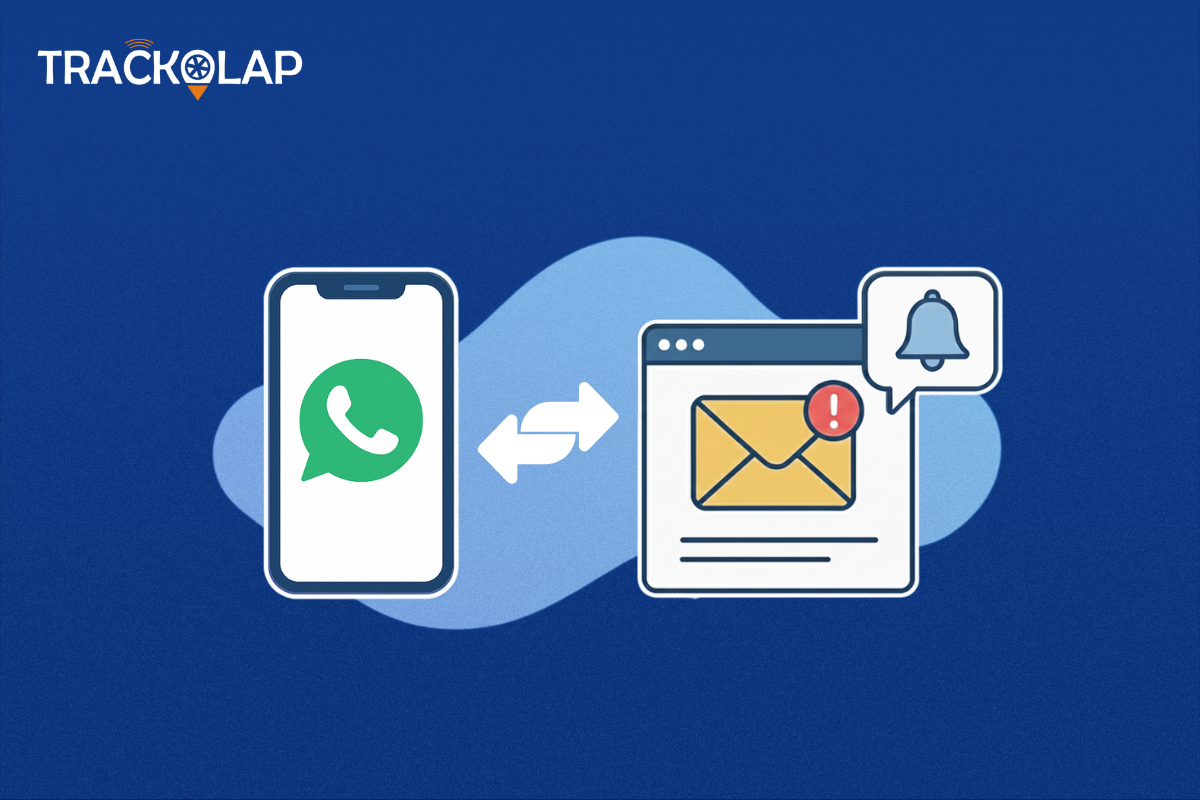
Top 5 Best Practices to Transform Field Operations with Opportunity Management Software
Transforming field operations isn't only about enhancing workflow efficiency and redefining how your field force works, interacts, and delivers better sales outcomes. Opportunity management software (OMS) can bring varied aspects together, helping businesses optimize workflows, improve collaboration, and seize opportunities with precision. Imagine your field sales teams are equipped with real-time data, automated solutions, and insightful analytics with robust OMS features.
But why stop with the basics? By leveraging best practices with a sales force tracking app , you can effectively streamline resource allocation to create seamless customer experiences. However, this application goes beyond task tracking; it empowers the field sales workforce to work smarter and ensure every sales effort adds measurable value to the organization.
In this guide, we will explore the top 5 best practices for transforming your field operations with an opportunity management tool. Whether you are seeking to minimize downtime, enhance efficiency, or deliver exceptional service, the strategies outlined in this blog will help you achieve field operational excellence and gain a competitive edge seamlessly.
Benefits of Transforming Field Operations with Opportunity Management Software
Transforming field operations with opportunity management software offers several benefits to businesses. It optimizes procedures and improves the overall decision-making approach. This software allows real-time tracking of sales opportunities, enabling communication between managers and field teams and offering insights into customers' needs and performance metrics.
By automating task management, streamlining resource allocation, and promoting collaboration, this software assists businesses in driving revenue growth, improving customer satisfaction, and staying competitive in the fast-paced marketplace.
A) Improves Customer Relationships
With a centralized platform for customer interactions, field sales teams can have complete visibility into the customer’s history and preferences. Sales force live tracking app feature enables them to customize communication and offer a customized approach during meetings.
Moreover, timely follow-ups and proactive engagement promote trust and enable businesses to strengthen relationships with customers. This approach further fosters coordination between field sales teams and customer support teams to enhance consumer experience effectively.
B) Enables Making Data-Driven Decisions
A sales tracking system offers actionable insights via real-time central dashboards and analytics. Managers can easily identify trends, monitor sales performance, and forecast revenue by accurately leveraging the right opportunities.
By assessing KPIs, sales managers can easily refine strategies to target the right customers and potential opportunities. This insightful approach empowers teams to prioritize deals that possess high potential, ensuring that they drive outcomes and improve resource allocation for the upcoming sales cycle.
C) Promotes Scalability and Adaptability
A field sales tracking tool is designed to grow your business. As your sales operations expand, this system adapts to manage large teams, complex pipelines, and diverse customer needs to ensure you drive growth without any hurdles.
Furthermore, customizable features enable organizations to effectively align strategies with overall business goals. This level of scalability ensures that the platform remains a valuable solution regardless of how field operations evolve over time.
D) Improves Sales Forecast Accuracy
A sales force tracking app assists field teams in predicting revenue with precision by offering a comprehensive view of the entire sales pipeline. It provides accessibility to detailed insights into overall deal stages, probabilities, timelines, and more, enabling forecasting sales outcomes with accurate data.
By using historical data and predictive analytics, managers can easily identify potential bottlenecks and address issues promptly. This approach ensures the forecast remains accurate, minimizing the risk of missed targets or overcommitments.
E) Offers Mobile Accessibility for Field Teams
An opportunity management tool provides mobile-friendly user interfaces, which allow teams to access data on the go. This approach ensures that they are well-equipped for customer interactions during field visits.
With mobile capabilities, sales reps can effortlessly update opportunity statuses, review customer details, and collaborate with teammates. This level of accessibility enhances agility and responsiveness and offers a competitive edge in a dynamic sales environment.
5 Best Practices to Improve Field Operations with TrackOlap’s Opportunity Management Software
TrackOlap’s opportunity management software is designed to optimize field operations, assist businesses in enhancing work efficiency, and drive growth. It offers real-time insights and facilitates seamless collaboration between teams, ensuring sales reps can focus on high-potential tasks while automating routine procedures. It empowers organizations to manage sales opportunities, track progress, and respond to customers' needs and queries effectively.
Whether through better data management, enhanced communication, streamlined scheduling, or route optimization, implementing the best strategies supports businesses in making informed decisions that maximize sales performance and profitability. Moreover, by using the full potential of this software, businesses can transform field operations with result-driven functionalities.
1. Centralize Data and Ensure Real-Time Access
A sales force tracking app enhances field operations by centralizing critical data into one comprehensive platform. This eliminates the requirement for multiple, disconnected systems and ensures field teams have instant accessibility to updated customer information, sales opportunities, and seamless project progress.
By unifying data sources, teams can make better decisions on the go, and minimize delays and inefficiencies, which are often caused by data silos. Additionally, real-time updates foster immediate communication of changes and allow employees to quickly adapt to new trends and changes.
Furthermore, this software's mobile-friendly interface ensures field employees retrieve essential information anytime, anywhere. Whether employees need to review customer history, monitor sales performance, or access product/service details, real-time accessibility can improve customer satisfaction levels. Moreover, integrating cloud-based technology allows seamless collaboration between managers and field sales teams, ensuring everyone remains aligned with the organization’s objectives.
For instance, companies can utilize real-time updates to assign technicians tasks based on location and ensure faster response times for maintenance calls.
2. Automate Routine Tasks to Improve Efficiency
Field sales tracking tools can help you automate repetitive tasks significantly. Automation procedures like lead tracking, appointment scheduling, follow-up reminders, and more. This tool frees up valuable time for field sales employees and enables them to focus on strategic areas like closing deals and strengthening customer relationships. This approach further helps reduce human errors and ensure accuracy in data management and task execution.
Moreover, automated reporting and analytics offer instant insights into sales trends and performance metrics. Field sales employees can utilize these insights to identify potential sales opportunities to improve and adjust strategies accordingly. Managers can simplify oversight by providing a clear view of sales performance and progress in the sales funnel and fostering operational efficiency.
For example, a real estate company can focus on automating lead qualification and follow-up emails to ensure that no potential buyer is overlooked, even during peak times.
3. Enhance Collaboration Among Varied Teams
Maintaining effective communication serves as a backbone for fostering field operations, and the sales tracking system facilitates effective interaction between teams. Built-in messaging and notification keep field employees, customer support teams, and managers connected to regular operations and reduce the likelihood of miscommunication. Furthermore, team members can share updates, customer insights, and task status to make sure everyone remains on the same page.
Additionally, collaboration features like shared calendars and lead tracking allow synchronized efforts among team members. Field employees can update the status of task completion or lead management, and adequate information helps managers support the team with the right guidance. This level of transparency boosts work efficiency, promotes trust within the team, and creates a cohesive work environment.
For instance, the delivery company can use this software to notify employees about last-minute route changes and enhance efficiency and customer satisfaction.
4. Leverage Data Analytics for Decision-Making
Opportunity management software offers robust analytics tools that empower teams to make informed decisions. By assessing KPIs like conversion rates, response time, and revenue forecasts, teams can identify potential bottlenecks and areas for improvement. Predictive analytics provides insights into future trends and allows businesses to plan for upcoming sales cycles and field operational challenges.
These insights further translate to optimized sales routes, improved customer targeting, and streamlining resource allocation. Managers can utilize these data to refine strategies, allocate budgets to sales operations, and set achievable targets effectively. Additionally, the ability to measure outcomes against objectives ensures continuous improvement and accountability within the organization in the long run.
For example, telecom-based companies can use these analytics to predict high-demand areas for service upgrades, ensure resource optimization and improve customer services.
5. Prioritize Customer Experience with Personalization
Delivering exceptional customer experience is important for successful field sales operations. Using a sales tracking system assists in achieving consumer experience by allowing personalized interactions. By maintaining detailed customer profiles, this tool enables field teams to determine client preferences, pain points, and past interactions. This insight allows implementing customized solutions and targeted communication, improving customer satisfaction and loyalty.
Additionally, this system’s ability to monitor and manage customer feedback ensures continuous improvement in service quality. Field employees can address concerns in real-time, demonstrating their commitment to providing a better customer experience. Personalization strengthens customer relationships, differentiates your organization in the competitive landscape, and helps promote long-term growth.
For example, a healthcare company can use detailed patient profiles to customize in-home services, and improve care quality and patient trust.
Conclusion
Adopting opportunity management software can elevate field operations by offering real-time insights and improving communication and decision-making. By monitoring opportunities, businesses can promote proactive engagement with customers, making sure no lead is missed. Integrating mobile capabilities empowers field sales reps to stay connected and informed, creating a seamless workflow between field employees and managers.
By embracing this software, businesses can quickly respond to customer needs, close deals faster, and make data-driven decisions seamlessly. It’s a worthwhile investment to help companies to drive better customer satisfaction and bottom-line performance. Contact our team to transform your field operations today !






























 Back to Blogs
Back to Blogs










 D-5 Sector-59, Noida, Uttar Pradesh (India)
D-5 Sector-59, Noida, Uttar Pradesh (India) contactus@trackolap.com
contactus@trackolap.com 7011494501
7011494501










